Idaho
Impacts
National lab research, home state advantage
Homegrown or transplanted, INL is made up of people who choose to live and work here. Our actions and work reflect our respect for the state and everything in it. Our research into grid resilience, cybersecurity and advanced materials is aimed directly at future generations being able to enjoy what makes Idaho a treasure: its mountains, trout streams, ski hills and, perhaps above all else, its people and quality of life.
Accomplishments and data are from fiscal year 2024.
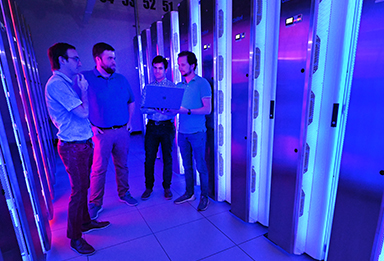
Idaho university taps into INL supercomputing
Researchers from Idaho State University used INL’s computer modeling resources to simulate volcanic eruptions at three different locations: Oregon, Alaska and Ecuador. After nearly 1,000 simulated eruptions using physics-based models, the team determined that for a plume to collapse into a fast-moving flow of volcanic gases and debris, wind needs to be blowing at a very specific height above a volcano’s top. Roughly 800 million people live within 65 miles of an active volcano, and these results will enhance computer models for analyzing volcanic eruptions, offer insights into past eruptions, and help volcanologists make informed decisions during imminent or ongoing eruptions.
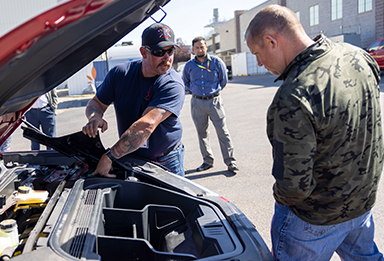
Experts train fire departments on EV fires
INL electric vehicle experts met in September with representatives from four eastern Idaho fire departments to give them a deeper understanding of lithium-ion battery fires and how to minimize hazards related to them. INL has been involved in battery and electric vehicle research for the Department of Energy since the mid-1980s, gathering extensive data on factors that can lead to thermal runaway and catastrophic failure.

Local students participate in ‘Hopper Challenge’
Two teams from Rigby High School competed in the first Pathways Student Challenge, sponsored by the Department of Energy’s Feedstock Conversion Interface Consortium. Each team was given a budget of $2,000 to design and build machines that could continuously grind biomass feedstocks like wood chips, cardboard and chopped-up corncobs. Experts from INL’s Biomass Feedstock National User Facility evaluated the teams in a head-to-head competition.
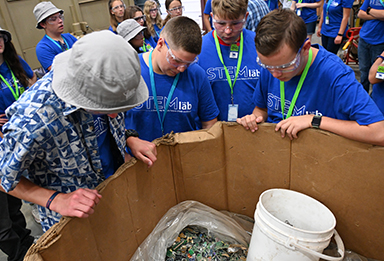
STEM Summer Camps expanded
INL expanded its selection of STEM Summer Camps. The three programs – STEM Scholars, CyberCore and Reliable Energy – are free and learning materials are provided. Over four days, STEM Scholars helped students in grades one through eight focus on age-appropriate scientific research questions and real-world problem solving. CyberCore, for students in grades 9 to 12, taught hands-on computer programming, networking and cybersecurity. Unveiled in 2024, Advanced Energy is the newest option, which offered introductory looks into everything from electric vehicles and advanced batteries to rare earth elements and bioenergy.
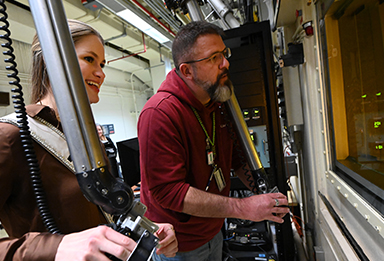
Miss America tours INL
Grace Stanke, Miss America 2023 and a University of Wisconsin nuclear engineering graduate, visited INL in January to speak to sixth-grade girls from three Idaho Falls schools and encourage them to follow their curiosity. The visit was hosted by INL’s K-12 STEM office and was Stanke’s last official engagement as Miss America. She also toured INL facilities and shared posts on social media.
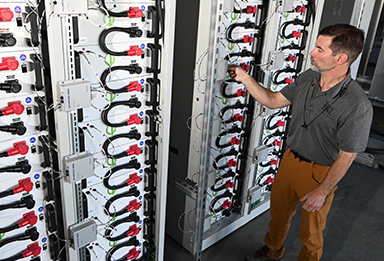
UI team chosen for pilot 4-H project
A team of high school students sponsored by University of Idaho was chosen to participate in a new national 4-H leadership program. The Idaho sophomores, known as Roth Scholars, included Miles Palmer of Lemhi County. His project, a microgrid that can be linked with local energy resources, was inspired by a visit to INL with his father. Palmer anticipates his microgrid could provide power redundancy in the Salmon area.
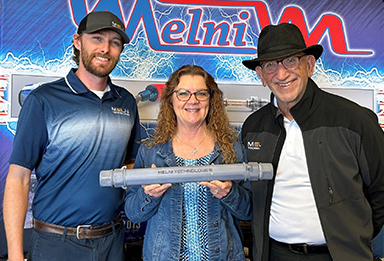
Inventor credits INL with project’s success
Twin Falls entrepreneur and inventor Mark Melni received Department of Energy funding to redesign and develop his company’s medium-voltage power cable connector, which can make underground electrical repairs faster, safer and more reliable. Melni’s was one of 12 companies nationwide to receive the funding, part of DOE’s Grid Overhaul with Proactive, High-speed Undergrounding for Reliability, Resilience, and Security program. He credited some of his success to INL, which provided critical high-voltage electrical testing.
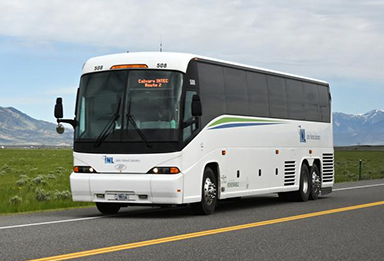
Bus fleet contributes to energy research
INL’s bus fleet is making a significant contribution with such innovations as eClimaCoach, a climate control system that runs off solar panels on the roof of each bus. That electricity is stored in two 12-volt batteries that can keep the cabin comfortable for up to five hours without running the engine. Estimates predict that the system can eliminate 168 pounds of carbon dioxide emissions per motorcoach per day.
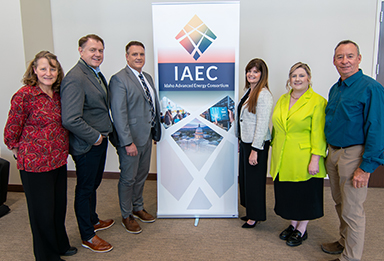
Consortium eyes workforce, supply chain needs
INL took its place as a member of the Idaho Advanced Energy Consortium, a partnership aimed at accelerating regional growth, sustainable workforce training and successful energy transition technologies. With INL leadership, IAEC created a subgroup called the Intermountain West Nuclear Energy Corridor (INEC) that focuses purely on nuclear. The U.S. Economic Development Administration awarded INEC a Tech Hubs Designation, naming it the only nuclear tech hub out of 31 tech hubs in the nation. INEC has brought more than $1 million in grants to Idaho. This funding has been used in part to help the Shoshone-Bannock Tribes conduct a feasibility study on potential clean energy deployment, expand IAEC’s reach to suppliers, communities and other partners, and enhance education materials about clean energy technologies.
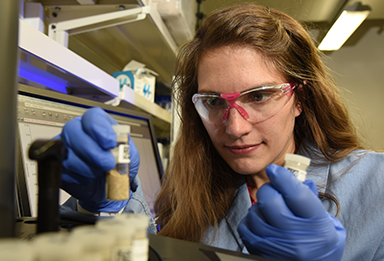
Idaho hemp company partners with INL for biomass tech
Hempitecture, an Idaho company that produces plant-based insulation and acoustic building materials from hemp fibers, saw the potential for hemp dust and fiber short straw to be turned into biomass pellets or absorbents. For help, it turned to experts at INL’s Biomass Feedstock National User Facility, which helps the bioenergy industry turn wood, energy crops, municipal solid waste and agricultural residues into valuable fuels and clean chemicals.
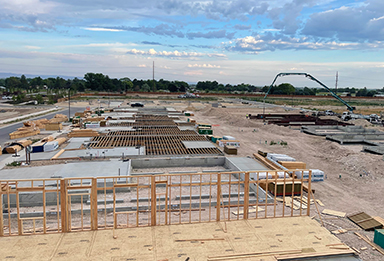
Laser-engraving company receives INL help
To get building projects done right the first time, Flashpoint Building Systems’ Nick Stoppello and Pat Churchman developed an integrated layout system that laser-engraves floor plans and building information at scale onto a project’s subfloor. To make sure their process didn’t compromise the material’s quality, the Boise-based pair turned to INL’s Technical Assistance Program, which provides 40 hours of expertise to qualifying small companies.
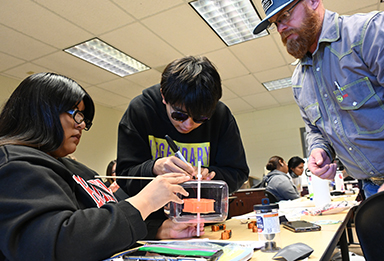
Tribal students attend Hydro School
With funding from U.S. Department of Energy’s Water Power Technologies Office, INL researchers engaged with students at the Shoshone-Bannock Jr./Sr. High School in Fort Hall to teach the students about hydropower. The two-day school focused on the cultural and historical significance of water to the Shoshone-Bannock Tribes and helped students learn the cultural implications of deploying certain technologies on sacred land and rivers. Researchers sought new information and insights regarding tribal perspectives on hydropower development.
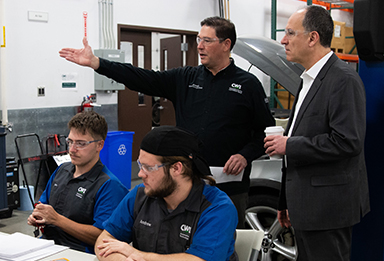
INL, education partners host Energy Days
Energy Days is a dynamic two-day event connecting local students and community members with the energy industry.
The College of Western Idaho event invited community members, elected officials and students from CWI and Boise State University to learn about INL’s initiatives. Highlights included a tour of CWI’s Micron Education Center, where INL Director John Wagner engaged with CWI’s leadership, and an interactive student forum led by Wagner.

INL economic impact infographic
Not finding what you are looking for? Please send your question to [email protected].
